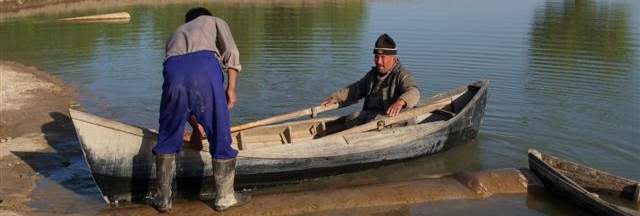Description
Water resources of the Aral Sea basin are under increasing pressure, particularly from the different sectoral needs in water use (e.g., conflict over whether hydropower or irrigation water use should take priority). Moreover, climate change is expected to have a significant impact on the basin.
Thus, the countries will face intensive retreat of glaciers in the mountains of Central Asia, changing hydrology, increased frequency of extreme floods and droughts. Water availability and thus water allocation are predicted to become major challenges.
Action taken
Basin Economic Allocation Model (BEAM) is an economic model for water use in the Aral Sea Basin, developed in 2012 by IFAS and USAID project team consisting of experts from DHI, COWI and Global Water Partnership CACENA. The model was developed in order to explore whether it may be possible to change existing water allocation patterns in ways that enhance overall welfare in the Aral Sea basin.
The BEAM model assesses and allocates water across time and space to different uses so that the economic welfare associated with water use is maximized.. It differs from most other water planning models with respect to the way in which water is allocated by the model.
In most other river basin planning models, water is allocated using fixed demands and/or prioritization schemes that satisfy some water uses before others (e.g., household use may take priority over irrigation). In the BEAM representation, water is allocated according to economic optimization criteria that are based on the principles of effectiveness, efficiency and equity.
BEAM is developed as a decision support system to facilitate putting “value on water use” and sustainable use of water resources in support of the countries development. The model estimates welfare changes associated with changes to how water is allocated between the five countries in the Basin (Kazakhstan, Kyrgyzstan, Tajikistan, Turkmenistan and Uzbekistan; water use in Afghanistan is assumed to be fixed).
The model addresses the Aral Sea Basin as a whole – that is, the rivers Syrdarya and Amudarya, including Kashkhadarya and Zerafshan, and the Aral Sea. The model covers five sectors: agriculture, hydropower, nature, households and industry.
The model is developed as a decision support system to facilitate achievement of long-term, comprehensive regional agreement on integrated use of water resources and environmental protection of the Aral Sea taking into account interests of all states of the Region (Joint Statement of the Heads of IFAS states-founders, Almaty 2009) and relevant issues of transboundary cooperation: sustainable water recourses management, food and energy security, mitigation of climate change impacts.
Use of BEAM model promotes stakeholder participation in water resources management. It will be accessible online for the public use.
Lessons learned
- The water allocation can be supported by models that assess economic value maximization of different uses.
- Model can explore whether it may be possible to change existing water allocation patterns in ways that enhance overall welfare in the basin.
- Model facilitates assessment of the economic impact of changes to water allocation patterns on different groups of water users within the basin, including the riparian states, as well as different sectors such as irrigation and hydropower.
- Model allows users to estimate the economic impact of changes to physical infrastructure such as new reservoirs and irrigation efficiency improvements.
- Model facilitates application of the IWRM modeling approaches and tools in the government policy making and regional cooperation and contributes to development of resource efficient green growth strategy in the Aral Sea basin.
Photo credit: Björn Guterstam

